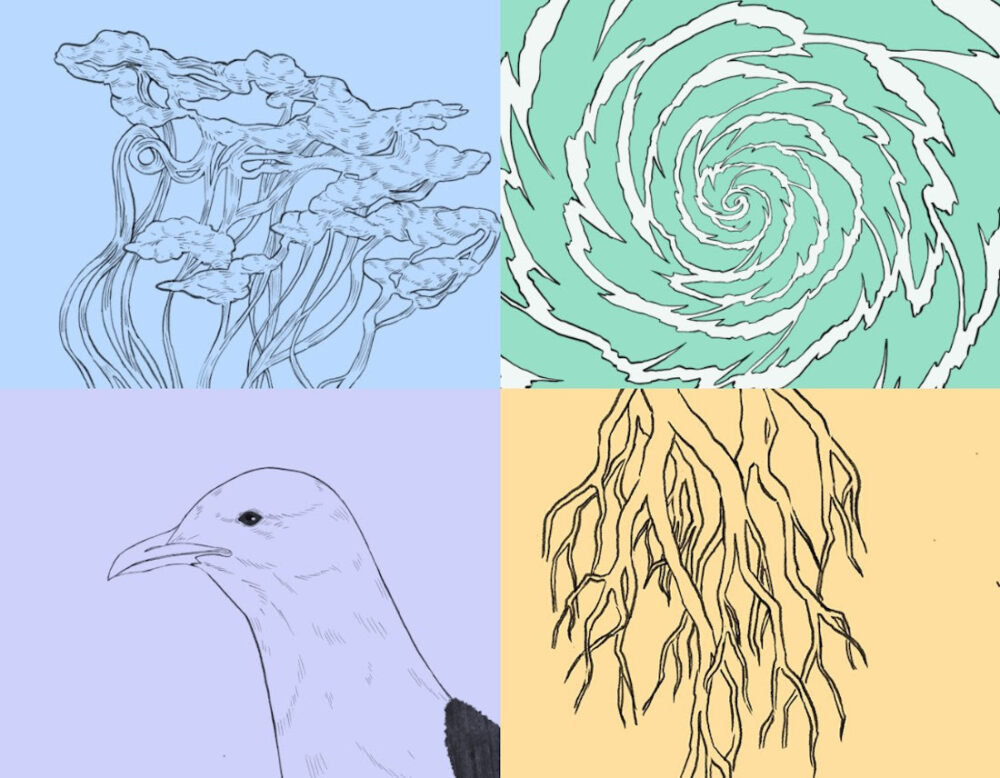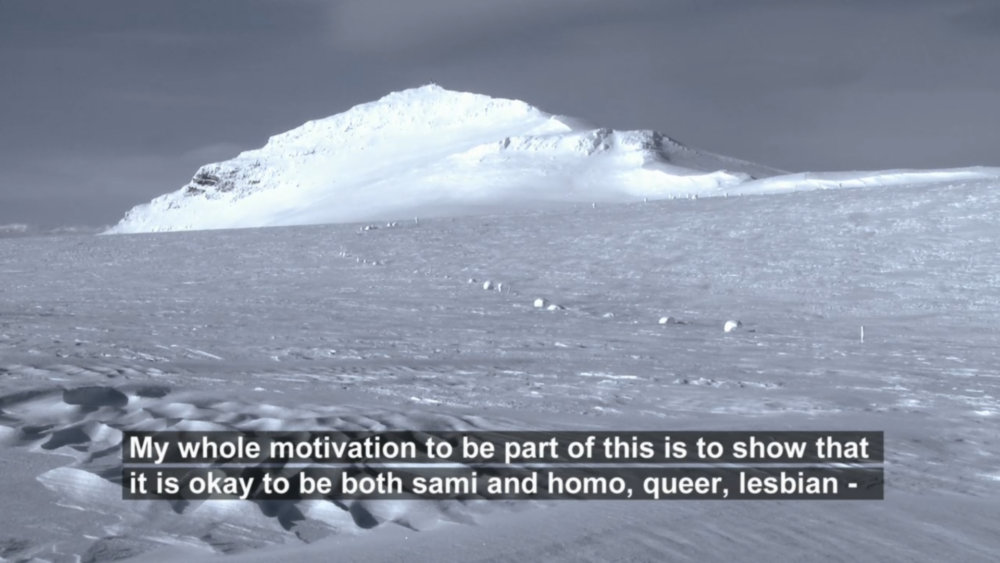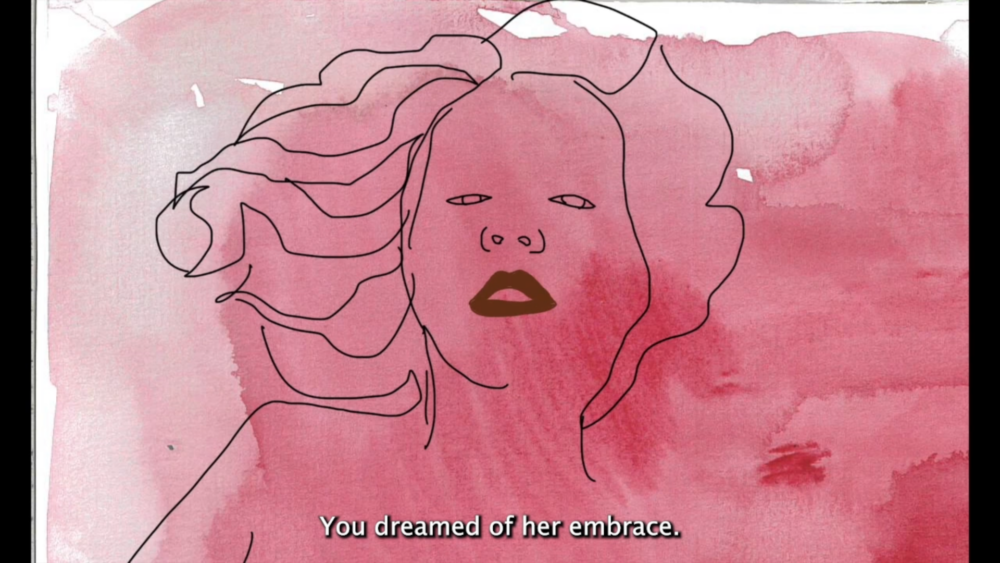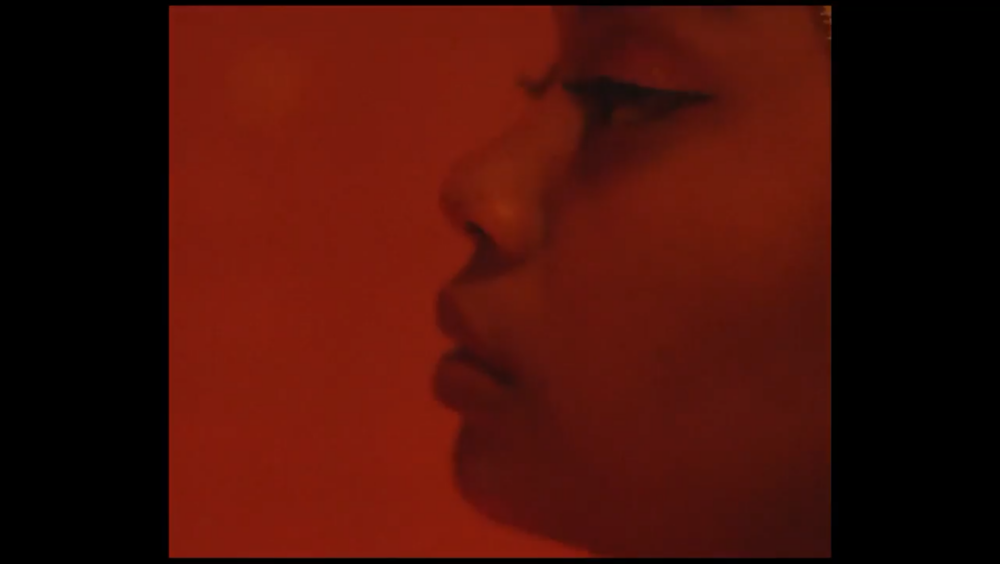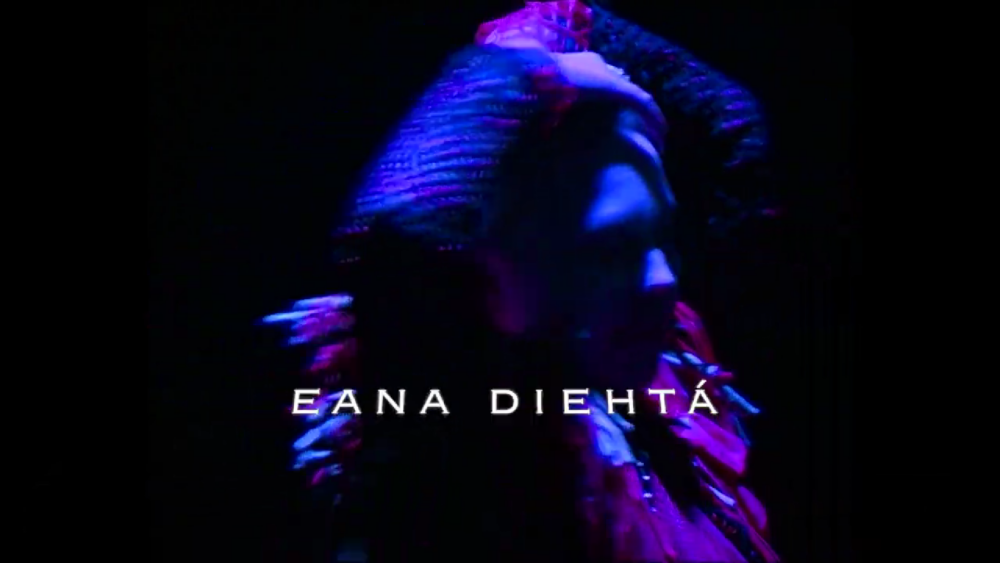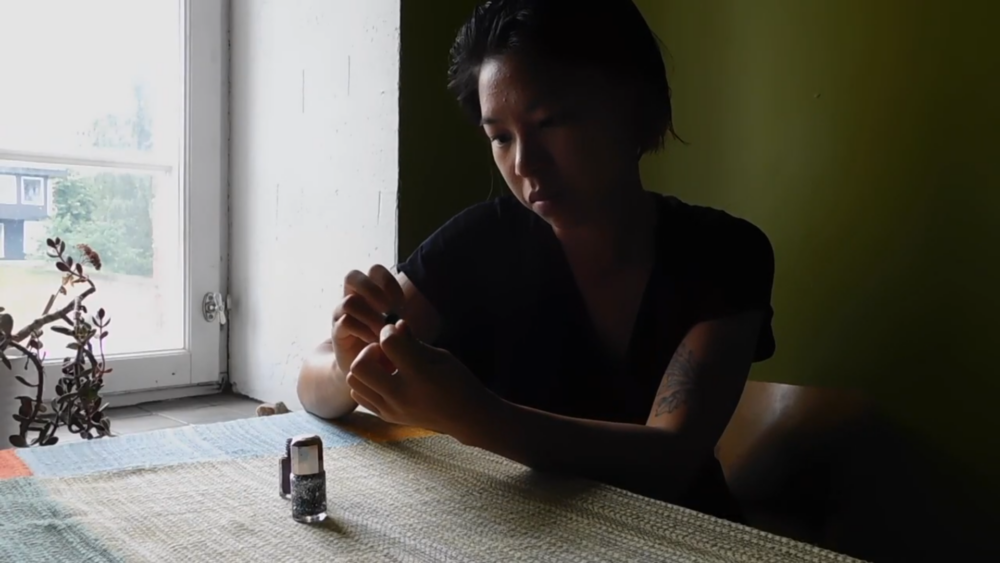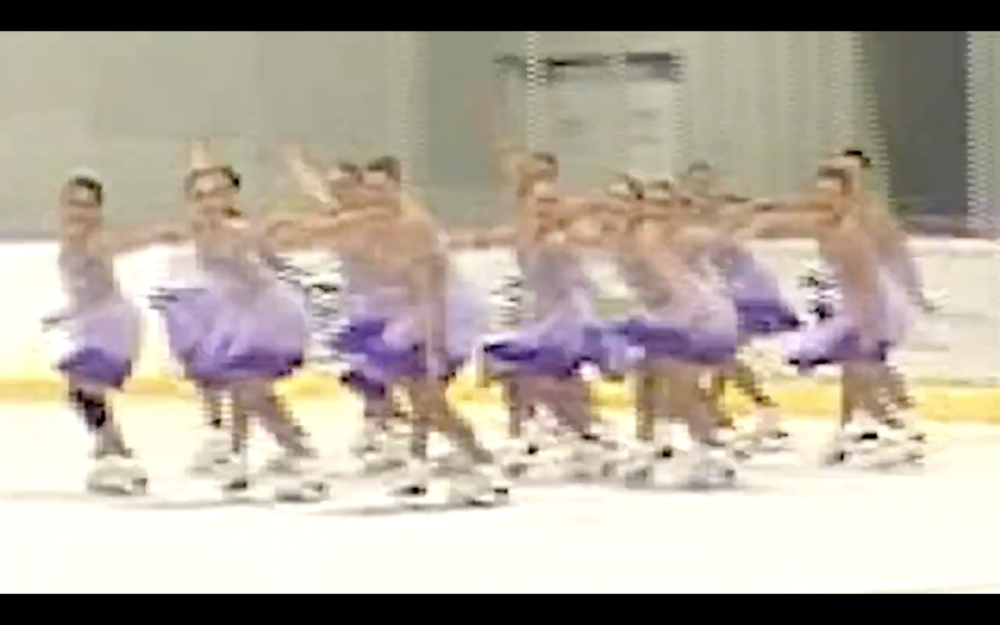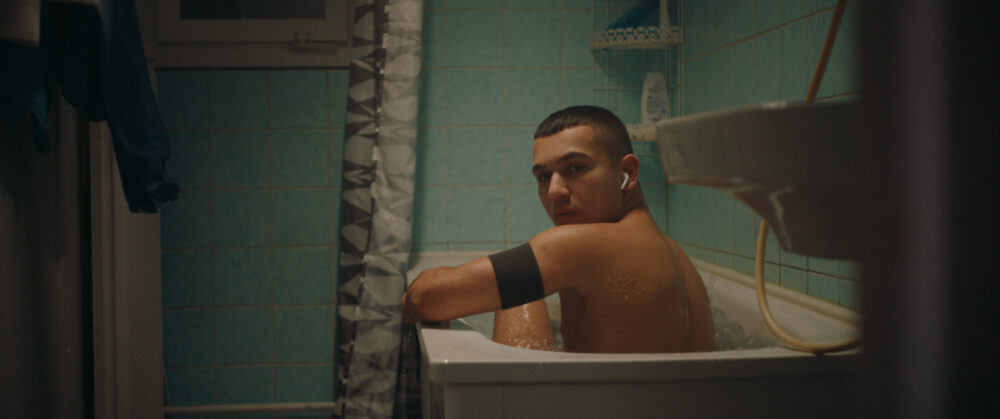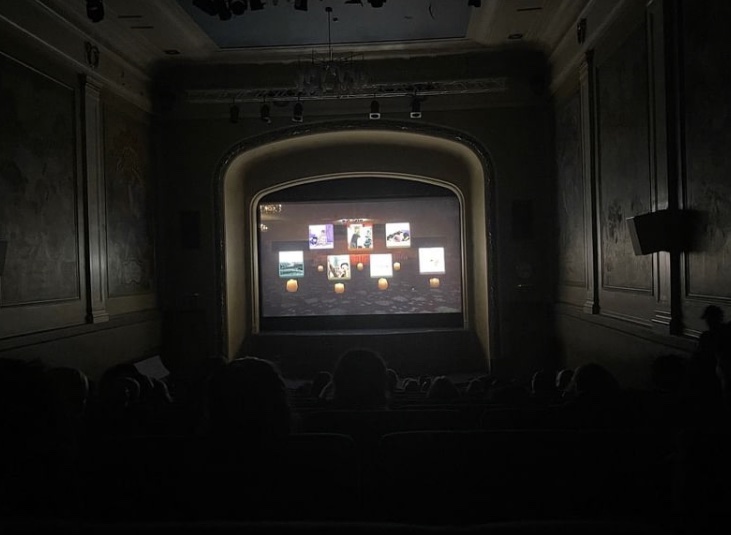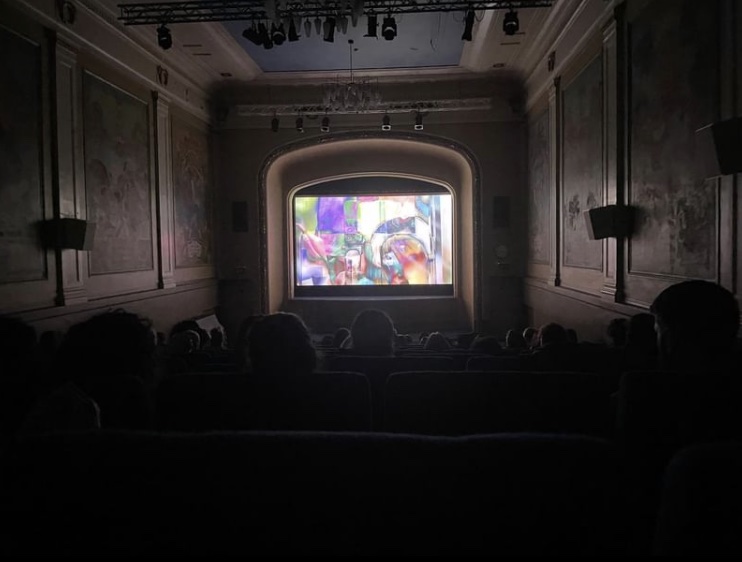OPEN OUT presents QUEER CINEMA: TROMSÖ
In this debut of Open Out‘s new Queer Cinema they invited Flat Earth Film Festival and SAQMI to collaborate on an event around Queer Moving Image in the Nordics. FEFF @flatearthcinema who are based in Seyðisfjörður and SAQMI are both ground-breaking organisations in their own right when it comes to moving images, with very different approaches. This will be a night you do not want to miss!
The screening program features a variety of multiply marginalised voices around the Nordic region and the United States, and does in that way make visible and readily available experiences that often do not reach the mainstream, but that have an immense value to our communities and society at large. With this new addition to the festival, Open Out Cinema hopes to bring a sense of community and awareness of queer existence across the vast Nordic regions, and with that we hope to contribute to broadening the general understanding of what Nordic perspectives might look like.
In addition Status Queer will join Open Out the second time around to kick off the event with their relational exercises around the festival’s theme CURRENTS. Status Queer will also be there, to answer any questions after the screening. Let’s come, cry, celebrate, take over and have a blast together <3 Everyone is invited to continue the night together with us at the Verdensteatret Bar after the screening.
The Program
1. Queering Sápmi – Sami stories beyond the norm [6.37 min]
Film makers: Sara Lindquist(they/them) and Elfrida Bergman(she/her)
The movie Queering Sápmi is a result of the project with the same title that was performed between 2011 and 2015, with the aim of highlighting queer Sami stories that in different ways portray the human as more than one category. With beautiful pictures and stories from queer Sami, Queering Sápmi creates a portrait of Sami that challenges sexuality and gender rules.
Sara Lindquist (they/them), a photographer and Elfrida Bergman (she/her), a cultural analyst have been stable advocates for queering Sápmi, writing and publishing the book Queering Sápmi – stories beyond the norm in 2013 alongside a big exhibition with the same name. Both the book and the exhibition were built on interviews with 30 Sami individuals who also identify as queer, gay, bi or trans.
2. Blossom [13.32 min]
Film makers: Matti Arbiv(he/him) & Tekla Andersson(she/her)
In Blossom the author Matti Arbiv(he/him) and animator Tekla Andersson(she/her) take us on an intimate journey through a coming of age into a queer identity. In the film Matti navigates the relationship between his religious moral and his queer identities where the viewer gets a glimpse of Matti’s inner dialogue as he comes to terms with his queerness.
Matti Arbiv (he/him) who now identifies as a trans man, was not out during the making of this film, but since then his identity has continued blossoming into who he is today. Sharing his story with us offers an invaluable look into how so many of us came to our identities through what was available to us at the time we were finding ourselves. The important thing is that we are always changing and evolving, and that we allow ourselves and others to blossom in these processes.
3.The fourth Element [2min]
Film maker: Futuro berg(he/him) ft. Poet Veronica Odetunde(she/her)
Using Odentunde’s poetry, the film explores a complicated relationship with texturized hair. Here, water is both the medium which returns texturized hair to its natural state and the medium over which black and brown people were enslaved and colonised.
Powerhouse Veronica Odetunde (she/her) @wordsbyveronica & @weronicacoco] is trained in communication and cultural project management as well as being trained as a Doula in the birth without fear method. Veronica is a model, a poet and a cultural organiser, and has co-founded Layers of Creativity @layersofcreativity and Afroinstituten Göteborg @afroinstitutionen.
4.Eana diehtá [5.03 min]
Eana diehtá is a shortfilm about sámi queer joy and the meaning of community. It celebrates decolonial dreams and knowledge coming from the elders & Eana, the Land.
Nature is and has always been queer. We are still here, we are still queer.
Eana diehtá is a collaboration between three storytellers: poem and oral storytelling by Máret Ásllat Ivvár Ovllá Ritni Ráste, Ritni Ráste Pieski (he/they), auditional storytelling, composition and music by Guhtur-Niillasa Sire Nanna Pessi, Pessi Jouste (they/them) and visual storytelling, filming and editing Wanda Holopainen (they/them).
This short film was made independently for Sápmi Pride and is dedicated to our community at all times.
More info about the film makers:
Máret Ásllat Ivvár Ovllá Nilla Ritni, Ritni Pieski (he/they) @ritnitearsis a queer Deanu-Sámi performance artist and activist. In art, they are busy with drag, decoloniality, queering up, joy and playfulness. Pieski has been active with queer Sámi issues. He was the main organiser of Sápmi Pride in 2021.
Wanda Holopainen (they/them) @whoisataa is an art activist, documentarian, and storyteller. Their creative journey revolves around narratives, documentation, identity, and the art of communication. Through their artistic endeavors, Wanda endeavors to reshape and challenge our conventional understanding of the world.
Presently, Wanda is deeply engaged in the realm of analogue filming, utilizing this medium to deconstruct the lenses of colonialism and capitalism. This approach serves as a means to unveil new perspectives and insights. Beyond their personal projects, Wanda holds a significant role as the co-founder and creative director of Ataá Agency, a platform dedicated to pushing creative boundaries and fostering meaningful artistic endeavors in the production of content and knowledge
Guhtur-Niillasa Sire Nanna Pessi, Pessi Jouste (they/them) @pessiyoste is a Sámi musician, violinist, composer and activist.They have a special interest in influencing through art, which they explore in particular through their band VIMMA. Jouste also plays regularly in the bands Ulla Pirttijärvi & Ulda and Suõmmkar. They have studied classical music at Tampere Conservatory and rhythm music at Metropolia University of Applied Sciences.
5. Did they send me daughters when I asked for sons? [4min]
Film makers: Wren Krisztin, Grace Krisztin & Theresa Hoffer
Wren Krisztin (he/they/it) @disgruntledfarmer is a documentarian, writer, musician, farmer, and multimedia artist based in Baltimore, Maryland, U.S.A. Did they send me daughters when I asked for sons? is a video collage of footage shot by Wren’s mother Terry Hoffer, of his sibling Grace Krisztin’s synchronized skating team, circa 2007-09. The video is part of a multimedia familial archival project titled Unsettling Archives, which weaves together the narratives and psychological states of the members of Wren’s family of origin, as well as that of their ancestors.
brev till mig själv eller transvården eller vita personer [4.20min]
ENGLISH TITLE: a letter to myself or the gender clinic or white people
Film maker: Jon Ely Xiuming Aagaard Gao
A poetic letter from a nonbinary trans person of color as a reply when getting the first letter from the gender clinic in Stockholm, Sweden
Jon Ely Xiuming Aagaard Gao (they/them) @suedi_alien is a trans activist, poet and artist. They are co-founder of drömsyskon zine, of the queer collective Rest And Resist (RAR) and queer art club collective and community space fake daughter.
Chavo [15min]
Film maker: Alecio Araci (he/him)
“Tjena tjavo” (English title: Chavo) is the opening film in a trilogy of short films in a Roma setting that deals with topics such as identity, sexuality, origin and the burden that can occur when these parameters do not match.
Alecio Araci (he/him) has a background in DIY and underground culture and has worked diligently on both low- and high budget projects since the mid-00s. Between the years 2015 and 2018, he trained on the bachelor’s program in film at Valand Academy in Gothenburg and has since continued his creative work both in front of and behind the camera. With his love for genre films and burlesque, he constantly strives to find the balance between the bizarre and the ordinary in his works.


